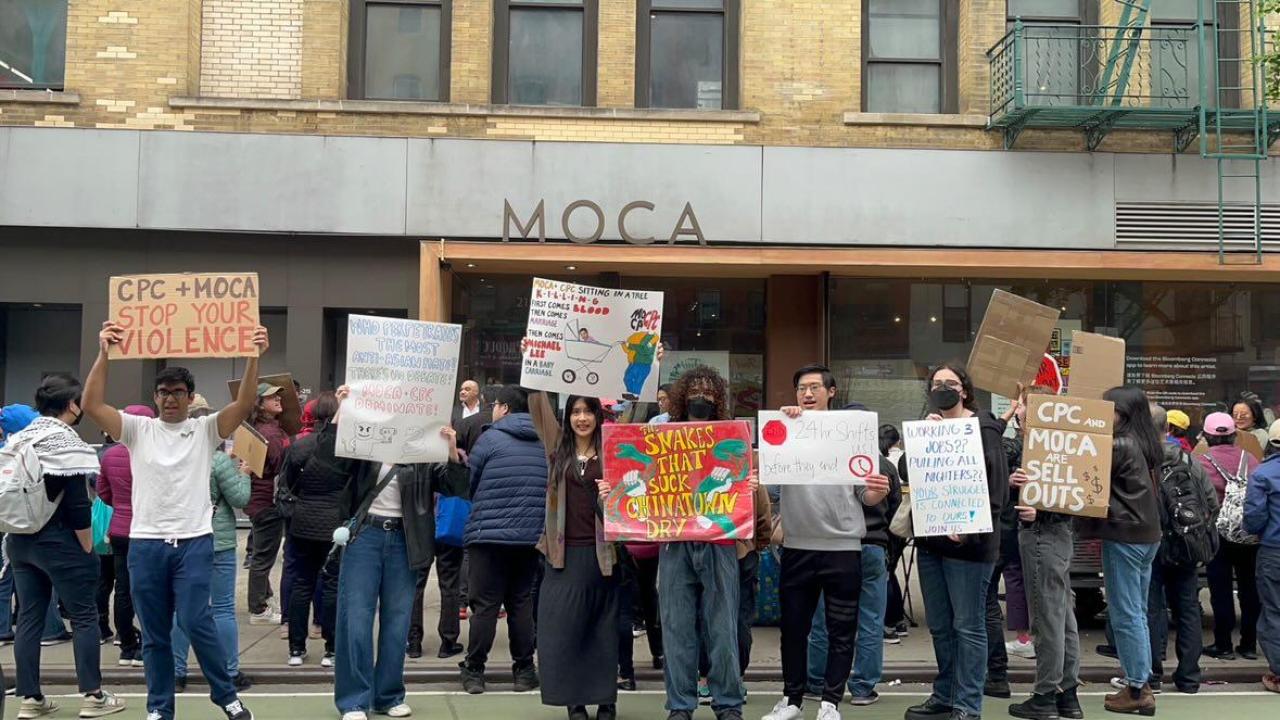
Kai Wen Yang’s new article in Urban Geography draws attention to racist practices often overlooked in urban planning
Is it possible to intervene in the racist zoning practices that are fueling displacement in cities across the United States? FRI Postdoctoral Fellow Kai Wen Yang’s new article in Urban Geography, Zoning initiatives, divide or unite? Anti-displacement struggles in Chinatown and the Lower East Side, New York City, 2002–2018, elucidates forms that racist zoning practices can take, offering insight for those engaged in efforts to build localized resistance against displacement.
Guiding us through sixteen years of zoning politics in post-9/11 Manhattan, Yang offers new theoretical insight that highlights the importance of coalitional formation and disintegration in shaping zoning plans that ultimately determine “the mutation of racism in urban space.” His analysis focuses upon two eras marked by differing rezoning initiatives in New York City’s Community Board No. 3 (CB3). CB3 is located within the Borough of Manhattan and includes the East Village, Chinatown, and the Lower East Side (LES).
Drawing upon zoning maps, meeting notes, and other historical documents, while likewise mapping out relevant institutional power structures, Yang’s analysis offers insight into how zoning practices are racialized. Yang first explores a period between 2002–2008 marked by coalition formation. In this phase, “ethnic city producers,” which are comprised of elite members of the racialized communities in Chinatown and the LES, collaborated with elected officials, real estate developers, and nonprofit housing organizations to manufacture a false image that local communities of color in Chinatown and the LES had consented to a rezoning plan that would exclude them from zoning protections. This congealing phase of coalitional formation led to the creation of the 2008 East Village rezoning plan. The plan protected the whiter and wealthier East Village from displacement and environmental degradation, while it excluded the working-class POC neighborhoods of Chinatown and the LES.
Subsequently, the Coalition to Protect Chinatown and the Lower East Side formed to oppose this racial exclusion and demanded Chinatown and the LES be included in the East Village rezoning plan. As a result, the city created the Chinatown Working Group (CWG). CWG eventually created its own rezoning plan that unified Chinatown and the LES, offering the same zoning protections to these neighborhoods that the East Village had been offered. In order to challenge this grassroots coalition, the coalition of ethnic city producers, elected officials, real estate developers, and nonprofit housing organizations entered into its disintegration phase between 2008–2018. This disintegration phase was characterized by the formations of compartmentalizing rezoning plans, aiming to re-divide Chinatown and the LES from one another.
Coalitional formation swung toward coalitional disintegration, a shift that disrupted grassroots efforts to make zoning decisions more inclusive and democratic. Looking towards the next struggle, Yang notes that in recent years, the pendulum has swung back towards coalition formation in the CB3 neighborhoods, with new zoning coalitions emerging that are attempting to launch and support pro-real estate zoning initiatives.
Coalitional formation/disintegration is one of several dynamics that Yang's article tracks in his exploration of CB3's zoning struggles in the post-9/11 era. Ultimately, Yang's study and analysis underscores the importance of understanding the contextual nuances surrounding zoning initiatives by those who wish to engage in anti-racist transformative practice in the governance of urban space.
Please join FRI in celebrating the release of this groundbreaking study!
The article can be read online here:
Yang, K. W. (2024). Zoning initiatives, divide or unite? Anti-displacement struggles in Chinatown and the Lower East Side, New York City, 2002–2018. Urban Geography, 1–22. https://doi.org/10.1080/02723638.2024.2348423